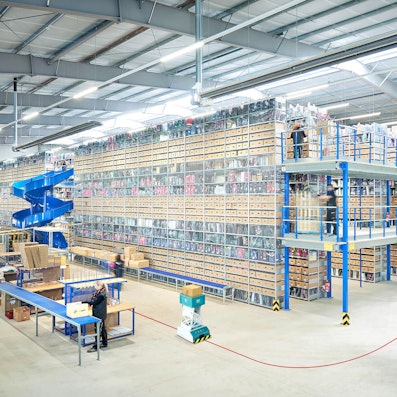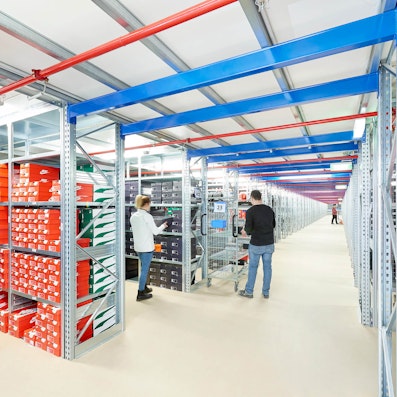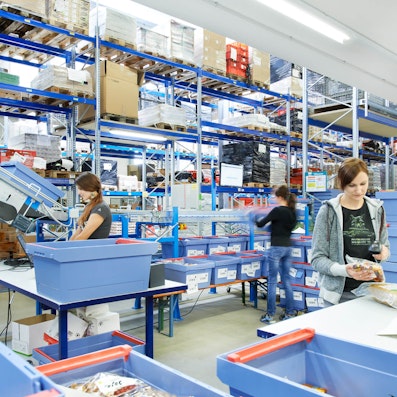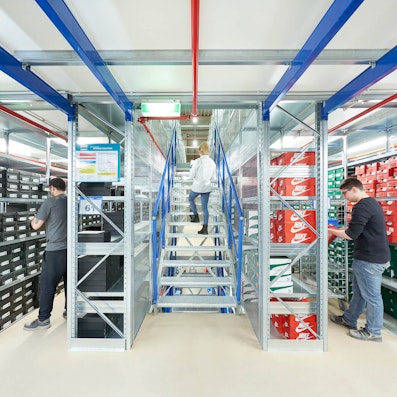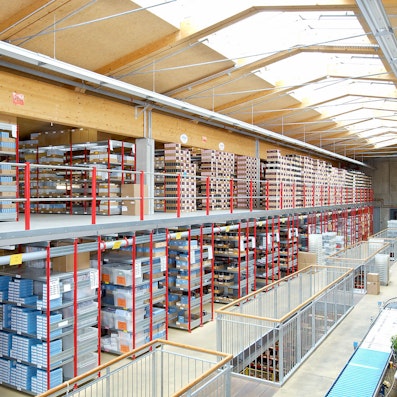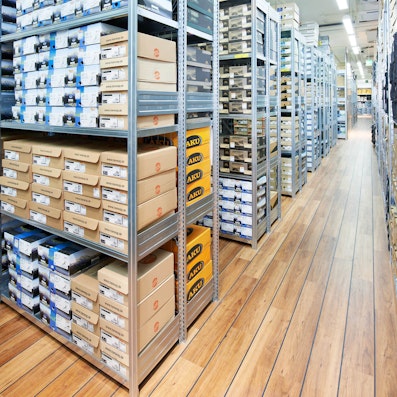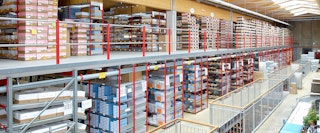Industry info
Online retail is booming: online purchases continue to rise as a proportion of overall sales and the growth is set to carry on. This boom will continue in all sectors, particularly for online sales of fashion and accessories, consumer electronics, and media.
All of this means that the subject of e-commerce is more current than ever. Annual growth rates of 10% or more indicate the enormous still untapped potential in the online retail sector – and not just in Europe.
Since the trend for growth in e-commerce will continue into the future, industry predictions are difficult to make. However, one thing is certain - many retailers and distribution centres will need to redesign or continually adjust their logistical setup to prepare for the future.
Customer requirements
The continuing growth in online orders presents many logistical challenges to businesses:
- Increased stock holding
- Ever shorter delivery times
- High rates of returns
Whether omnichannel or multi-channel, both models now integrate classical warehouse storage and distribution with the specific storage and distribution conditions associated with online retail.
The use of innovative, efficient storage and racking systems will play an essential role in the success of this business model. Manual shelving systems and multi-tier installations offer the required storage flexibility for the growing online retail sector, which means they are in high demand. Larger, experienced e-commerce retailers show a clear trend towards automation.
Today’s storage and distribution systems therefore need to factor in the demands of the e-commerce sector. In this context, online retail differs from conventional logistics, in that e-commerce businesses often process items faster and need to manage higher return rates (often using automated processes).
To keep up with the online shopping boom, logistics firms need to meet the requirements of seasonal fluctuations and shorter lead times.
BITO distribution systems massively optimise order and returns logistics, improving online retailers’ competitiveness. They meet the e-commerce sector’s current demands for flexibility, speed and maximum accuracy. As a result, logistics specialists can optimise goods flow and organise returns logistics so that returned products promptly show back up in the system.
Trends
- Customers no longer think in terms of sales channels. Constant availability and high quality service are expected both online and in physical branches.
- A high degree of market transparency results in demand for constantly innovating, first class logistical and shipping services.
- Whereas goods have historically been delivered to retailers on pallets, individual packages are now sent directly to end customers instead. Warehouse structures therefore need to be organised and adapted accordingly.
- Product diversity is increasing dramatically, and even sensitive goods such as fresh groceries need to be delivered in top condition.
- Online retailers need to be able to react not just to volatile changes in capacity usage, but also to seasonal fluctuations. In practice, this means that exceptional levels of flexibility are required for storage and picking.
- Fully automated storage and picking systems make sense when processing large numbers of similar items. In this case, it becomes very difficult to react to seasonal fluctuations or constantly changing sizes and numbers of items.
- A sophisticated and highly efficient returns processing system is critical to success in many sectors and can be decisive for a business’ profitability.
- E-commerce businesses need partners who can accompany them as they grow from garage warehouses to giant logistical centres. High scalability contributes significantly to successful growth.
The core functions include:
- Mapping of warehouse structures (zones, shelving & racking, storage positions, etc.)
- Master data management (debitors, item numbers, storage positions, etc.)
- Inventory management
- Order management (purchase orders, sales orders, production orders)
- Transport management (forklift traffic, product loading, product retrieval, stock relocation)
- Key performance indicator system/KPI (for monitoring order processing, capacity utilisation, productivity, etc.)
- Process handling:
- Goods-in (order notification, receipt, quality inspection, transfer to storage location)
- Goods-out (order scheduling, picking, packing, shipping)
BITO’s focal points for modern storage systems for e-commerce are as follows:
- Special systems exist for multi-channel logistics. Orders and returns can be processed through multiple channels.
- BITO systems enable efficient management of the small to medium-sized types of products that are typically sold online.
- Sectors handling large numbers of items employ systems with minimal error rates. Picking errors need to be avoided as much as possible in e-commerce: they result in lost customers.
- Online retail requires maximum flexibility. BITO systems make this level of flexibility possible for e-commerce businesses, allowing logistics firms to react quickly to changes in item numbers or order volumes and structures.
- BITO systems are modular in structure. This means they are also ideal for fast-growing startups and e-commerce businesses.

